La maquina perfiladora de cubierta de metal para estructura de acero puede producir cubierta de piso, cubierta de techo, cubierta de encofrado y vigacero (mas popular en Peru) de acuerdo a su dibujo.
El rango normal de espesor mecanizable de nuestra maquina perfiladora de cubierta de acero es de 0.8-1.2mm, el estándar o más utilizado en el mercado internacional es Gauge 22, 20, 18, 16 (0.75-1.5mm), la materia prima de trabajo es PPGI, acero galvanizado, etc. Confirmamos la configuración de la máquina según su dibujo, especialmente el paso y la altura de cada onda. Sussman Machinery es siempre su mejor opción de maquina perfiladora de cubierta de metal.
Parámetros técnicos de Máquina perfiladora de cubierta de piso de estructura de acero metálico
| Artículo No | Descripción | Tipo de unidad | RF-DF |
| 1 | Espesor de acero | milímetro | 0,75 -1,5 mm |
| 2 | Velocidad de formación | m/min | 0-20 m/min |
| 3 | Soportes de rodillos | estar de pie | 28-30 |
| 4 | Material del rodillo |
Gcr15 cromado
HRC55-60 |
|
| 5 | Diámetro del eje | Ф90mm | |
| 6 | Potencia del motor principal | kw | 11*2kw |
| 7 | Poder de corte hidráulico | kw | 5.5 |
| 8 | Presión hidráulica | MPa | 12 |
| 9 | Fuente de alimentación |
220V, 60HZ,3 fases
|
|
| 10 | Tolerancia | milímetro | 1.5 |
| 11 |
Material de corte
|
Cr12mov | |
| 12 | Sistema de control |
PLC con pantalla táctil
|
|
| 13 | Sistema DRIVE | Cadena | 1,6 pulgadas |
Lista de máquinas
| No | Nombre | Cantidad |
| 1 | Desenrollador hidráulico de 15 toneladas con carro de bobinas | 1 juego |
| 2 | Máquina formadora de rollos principal | 1 juego |
| 3 | sistema PLC | 1 unidad |
| 4 | Estación hidráulica | 1 unidad |
| 5 | Apilador automático de 12 metros | 1 unidad |
Flujo de trabajo de la máquina
Desenrollado, alimentación y nivelación, perfilado, corte y recogida de productos

Dibujo de perfil estándar del producto
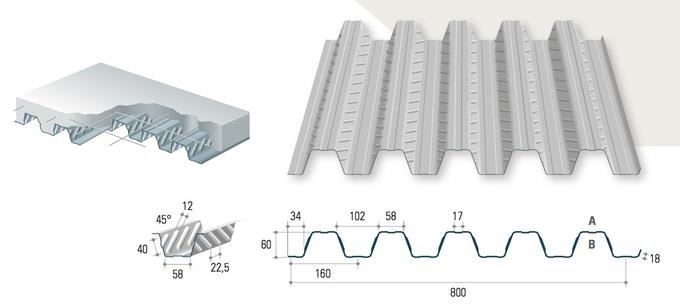
Solicitud


¿Qué es la perfiladora de cubiertas?
Una perfiladora de cubiertas es un tipo de maquinaria industrial utilizada en la industria de la construcción para producir paneles de cubiertas metálicas, también conocidas como cubiertas para suelos o tejados. Los paneles de cubierta se utilizan habitualmente en la construcción comercial y residencial para crear sistemas de suelos resistentes y fiables.
El proceso de perfilado consiste en alimentar una tira continua de metal, normalmente acero, a través de una serie de rodillos. Estas matrices moldean gradualmente el metal en el perfil deseado, formando los paneles de entarimado. El proceso es continuo y automatizado, lo que permite una producción de gran volumen con una calidad constante.
Las máquinas perfiladoras de cubiertas están diseñadas para manipular varios tipos de perfiles de cubierta, como patrones ondulados o acanalados. El perfil específico viene determinado por las matrices de rodillo instaladas en la máquina, que pueden personalizarse según las especificaciones de diseño deseadas.
La máquina suele incluir un desenrollador para sujetar y alimentar la tira de metal, una serie de rodillos dispuestos en orden secuencial y un mecanismo de corte para cortar los paneles acabados a la longitud deseada. Algunas máquinas también pueden tener características adicionales, tales como capacidades de gofrado o perforación para añadir textura o funcionalidad a los paneles de entarimado.
Las perfiladoras de cubiertas ofrecen varias ventajas en el proceso de fabricación. Proporcionan una gran eficacia y productividad, ya que pueden producir grandes cantidades de paneles de entarimado en poco tiempo. Las máquinas también son conocidas por su exactitud y precisión, que garantizan unas dimensiones y una calidad uniformes durante todo el proceso de producción.
En general, las perfiladoras de cubiertas desempeñan un papel vital en la industria de la construcción al permitir la producción eficaz y rentable de paneles de cubiertas metálicas, que son componentes esenciales en la construcción de suelos y cubiertas.
aplicación de la perfiladora de doble piso
- Techos y revestimientos de paredes: La perfiladora de doble piso puede utilizarse para fabricar paneles metálicos para tejados y sistemas de revestimiento de paredes. Las dos cubiertas pueden producir perfiles diferentes, como paneles ondulados o de junta alzada, que se utilizan habitualmente en edificios residenciales, comerciales e industriales.
- Sistemas de estanterías: Las perfiladoras de doble piso se utilizan en la producción de estanterías metálicas y sistemas de estanterías para almacenes, tiendas minoristas y otras instalaciones de almacenamiento. Los dos pisos pueden crear diferentes perfiles de estante o viga, lo que permite la fabricación eficiente de diversos productos de estantería.
- Guías para puertas de garaje: Las puertas de garaje a menudo requieren rieles que guíen el movimiento de la puerta. Una perfiladora de doble piso puede producir simultáneamente los carriles verticales y horizontales, lo que aumenta la eficiencia de la producción y reduce el tiempo de fabricación.
- Sistemas de partición: En los edificios de oficinas y espacios comerciales, los sistemas de partición se utilizan para crear áreas o habitaciones separadas. Una perfiladora de doble piso puede fabricar los distintos perfiles necesarios para los sistemas de partición, como montantes, raíles y conectores.
- Vallas y barandillas: Las perfiladoras de doble piso pueden producir diferentes perfiles utilizados en sistemas de vallas y barandillas. Estos perfiles incluyen piquetes, barandillas y postes, que son componentes esenciales para construir vallas y barandillas seguras y duraderas.
- Componentes de automoción: Las perfiladoras de dos pisos pueden emplearse en la industria del automóvil para fabricar diversos componentes, como bacas, marcos de puertas, canales de ventanas y perfiles embellecedores. Los dos pisos permiten la producción simultánea de distintos perfiles utilizados en diferentes partes del vehículo.
Ámbito de uso de la máquina perfiladora de tableros de suelo
El ámbito de uso de una maquina perfiladora de piso es principalmente en la industria de la construcción, donde los paneles de piso son ampliamente utilizados en varios tipos de edificios, incluyendo estructuras comerciales, industriales y residenciales. Estas son algunas aplicaciones especificas y usos de la maquina perfiladora de pisos:
- Sistemas de suelos compuestos: Las máquinas perfiladoras de tarimas de suelo se utilizan habitualmente para producir paneles de tarima de suelo compuesto. Estos paneles constan de una chapa de acero o una cubierta metálica que sirve de encofrado para el hormigón, creando un sistema de suelo compuesto. Los sistemas de suelos compuestos ofrecen solidez, durabilidad y resistencia al fuego, por lo que son ideales para edificios de varias plantas, aparcamientos y entreplantas.
- Sistemas de cubiertas: Aunque las perfiladoras de cubiertas de suelo se utilizan principalmente para cubiertas de suelo, ciertos tipos de perfiles de cubierta también pueden ser adecuados para aplicaciones de techado. Estos perfiles proporcionan una base estable para los materiales de cubierta, como el aislamiento y las membranas impermeabilizantes, y pueden utilizarse en construcciones de cubiertas planas o con poca pendiente.
- Plataformas elevadas y pasarelas: En entornos industriales, las máquinas perfiladoras de plataformas pueden producir paneles utilizados para plataformas elevadas, pasarelas y pasarelas. Estas plataformas proporcionan un acceso seguro y estable a maquinaria, equipos y áreas elevadas dentro de fábricas, almacenes y obras de construcción.
- Tableros de puente: Las máquinas perfiladoras de tableros pueden fabricar paneles de tableros que se utilizan como tableros de puentes en proyectos de infraestructuras. Estos paneles ofrecen soporte estructural, rigidez y durabilidad para la construcción de puentes, garantizando el paso seguro de vehículos y peatones.
- Aislamiento acústico y control de vibraciones: Los paneles de entarimado producidos por máquinas perfiladoras pueden incorporar características como relieve o perforaciones para mejorar las propiedades de aislamiento acústico y control de vibraciones. Estos paneles especializados se utilizan en edificios, teatros, estudios de grabación y otros entornos sensibles al ruido.
- Reacondicionamiento y renovaciones: Las perfiladoras de suelos también se utilizan en proyectos de rehabilitación o renovación en los que es necesario reforzar o mejorar los suelos existentes. Las máquinas pueden producir paneles de entarimado compatibles con el sistema de suelo existente, mejorando la capacidad de carga, la integridad estructural y el rendimiento general.
ventajas de la perfiladora de cubierta de acero
- Alta eficiencia y productividad: Las máquinas perfiladoras de cubiertas de acero están diseñadas para una producción continua y automatizada. Pueden producir un gran volumen de paneles de cubierta en un corto período de tiempo, maximizando la productividad y la eficiencia. Las máquinas pueden funcionar a altas velocidades, garantizando una producción rápida y reduciendo el tiempo de producción.
- Personalización y flexibilidad: Las máquinas perfiladoras de cubiertas de acero pueden personalizarse para producir paneles de cubiertas con diversos perfiles, tamaños y configuraciones. Las matrices de los rodillos pueden ajustarse o cambiarse fácilmente para adaptarse a diferentes especificaciones de diseño, lo que permite una mayor flexibilidad a la hora de satisfacer los requisitos del cliente. Esta versatilidad permite la producción de una amplia gama de diseños de paneles de entarimado para diversas aplicaciones de construcción.
- Calidad y precisión constantes: Las máquinas perfiladoras son conocidas por su exactitud y precisión en la conformación del metal. Las perfiladoras de cubiertas de acero garantizan dimensiones uniformes, bordes lisos y uniformidad en los paneles de cubierta. El proceso automatizado minimiza el error humano, lo que da como resultado productos de alta calidad con tolerancias ajustadas y especificaciones precisas.
- Producción rentable: Las perfiladoras de cubiertas de acero ofrecen ventajas económicas en la producción de paneles de cubiertas de acero. El proceso de perfilado continuo elimina la necesidad de realizar operaciones separadas de corte, punzonado y perfilado, reduciendo los costes de mano de obra y el desperdicio de material. Las máquinas funcionan eficazmente con un consumo mínimo de energía, lo que contribuye al ahorro general de costes.
- Durabilidad y resistencia: Los paneles de entarimado de acero producidos por máquinas perfiladoras son famosos por su durabilidad y resistencia. Los paneles están fabricados con acero de alta calidad, lo que les confiere una excelente capacidad de carga y estabilidad estructural. Pueden soportar cargas pesadas, tráfico peatonal y condiciones climáticas extremas, lo que los hace ideales para sistemas de suelos comerciales e industriales.
- Reducción de la manipulación de materiales: Las perfiladoras de chapa de acero suelen incluir un desenrollador integrado, que introduce la banda de acero directamente en la máquina. Esto elimina la necesidad de manipulación manual de bobinas pesadas y mejora la seguridad en el proceso de producción. El sistema automatizado de alimentación de material garantiza un funcionamiento suave y continuo.
- Integración con procesos posteriores: Las perfiladoras de cubiertas de acero pueden integrarse perfectamente con otros procesos posteriores, como el corte, el estampado, la perforación y el apilado. Esto permite un procesamiento posterior eficaz y la personalización de los paneles de cubierta, mejorando su funcionalidad y atractivo estético.

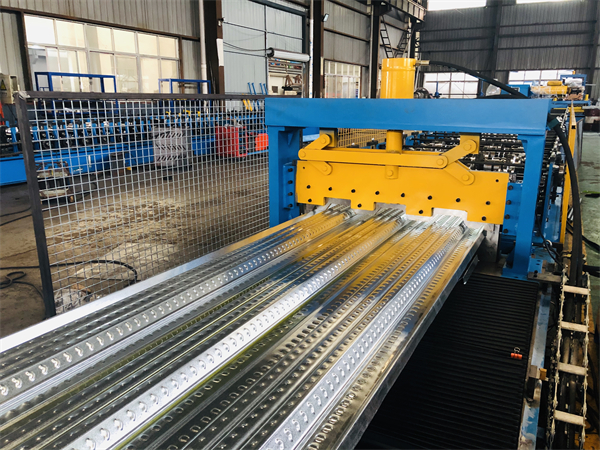

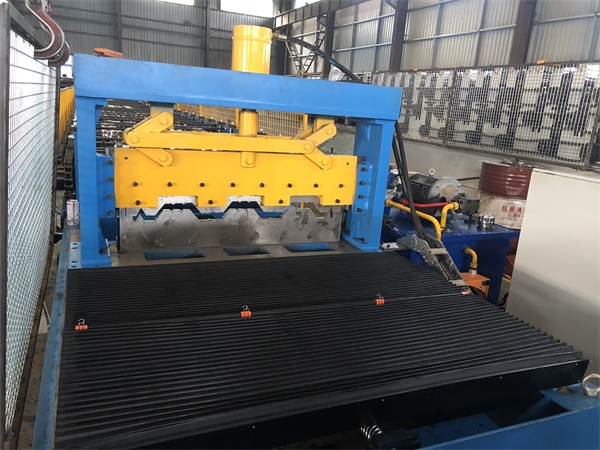


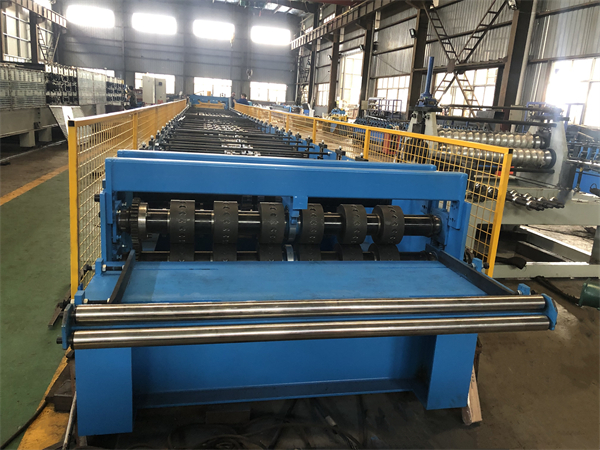
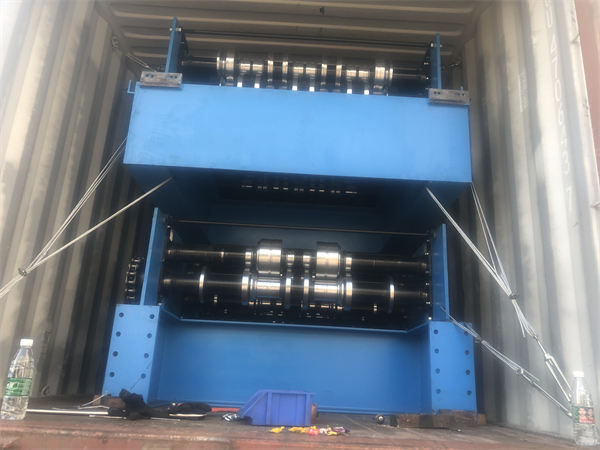
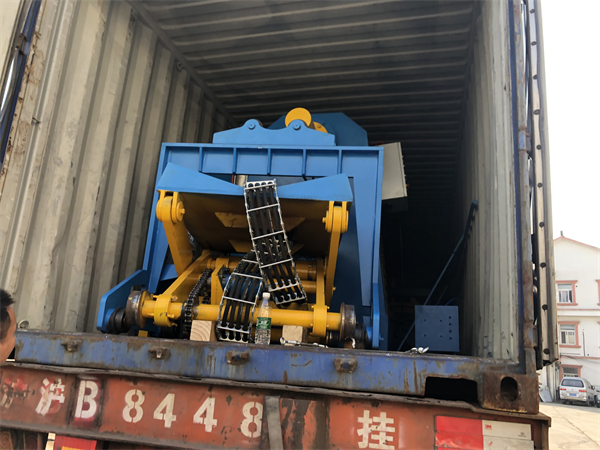
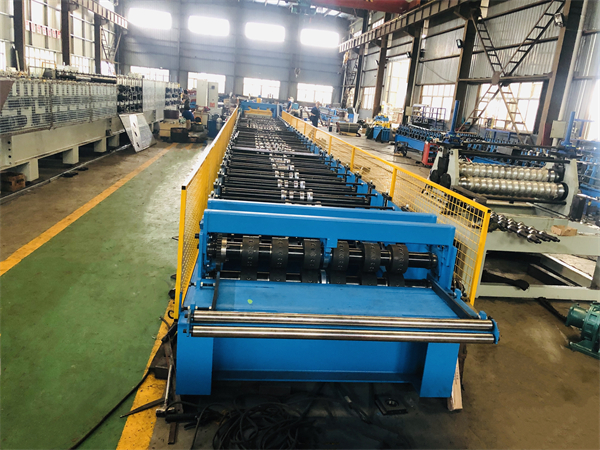

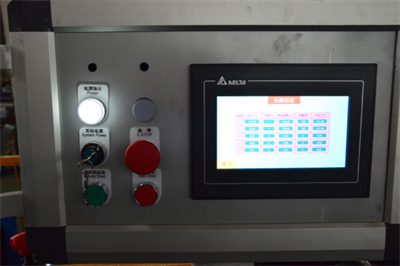



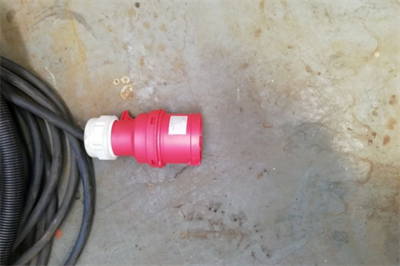



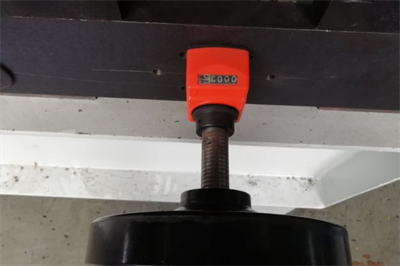





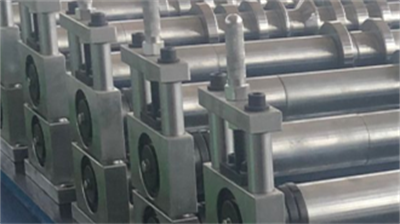

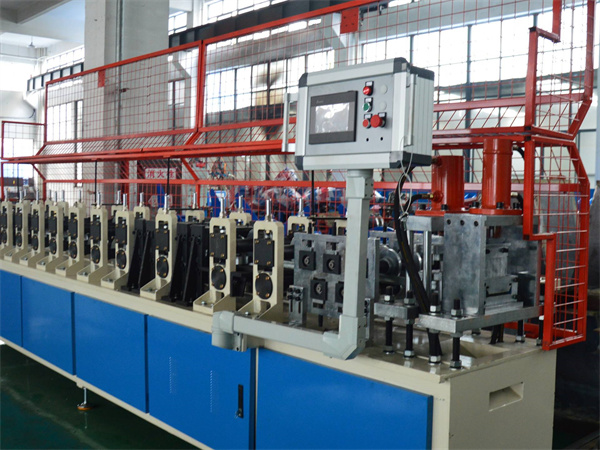
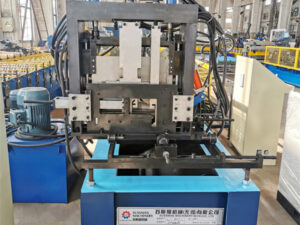

Valoraciones
No hay valoraciones aún.